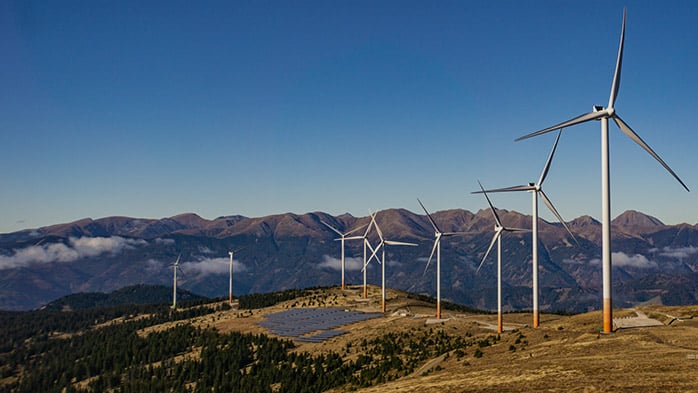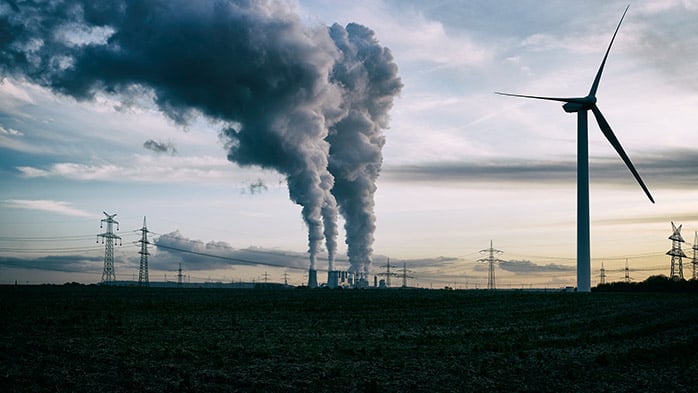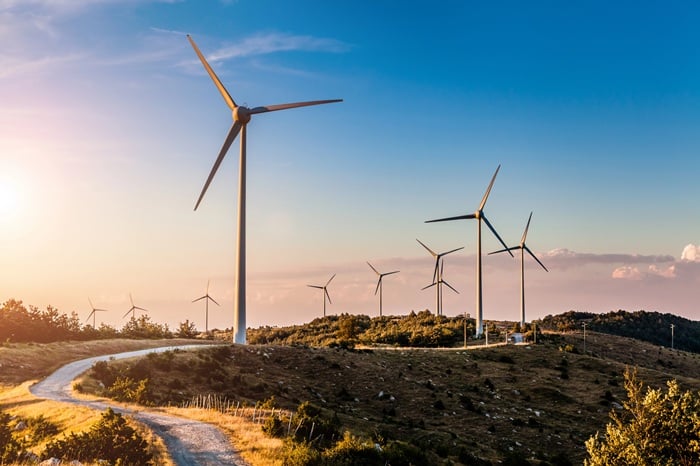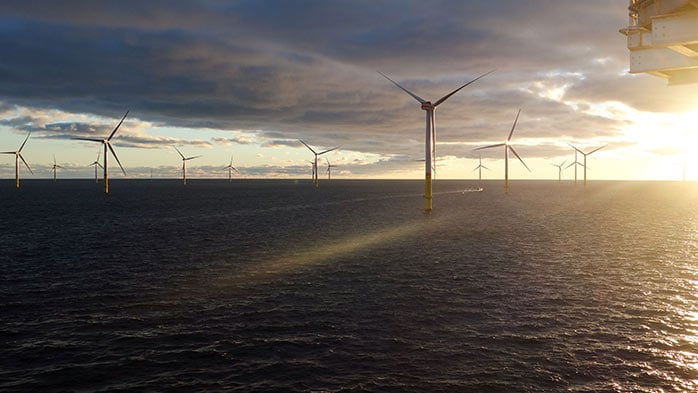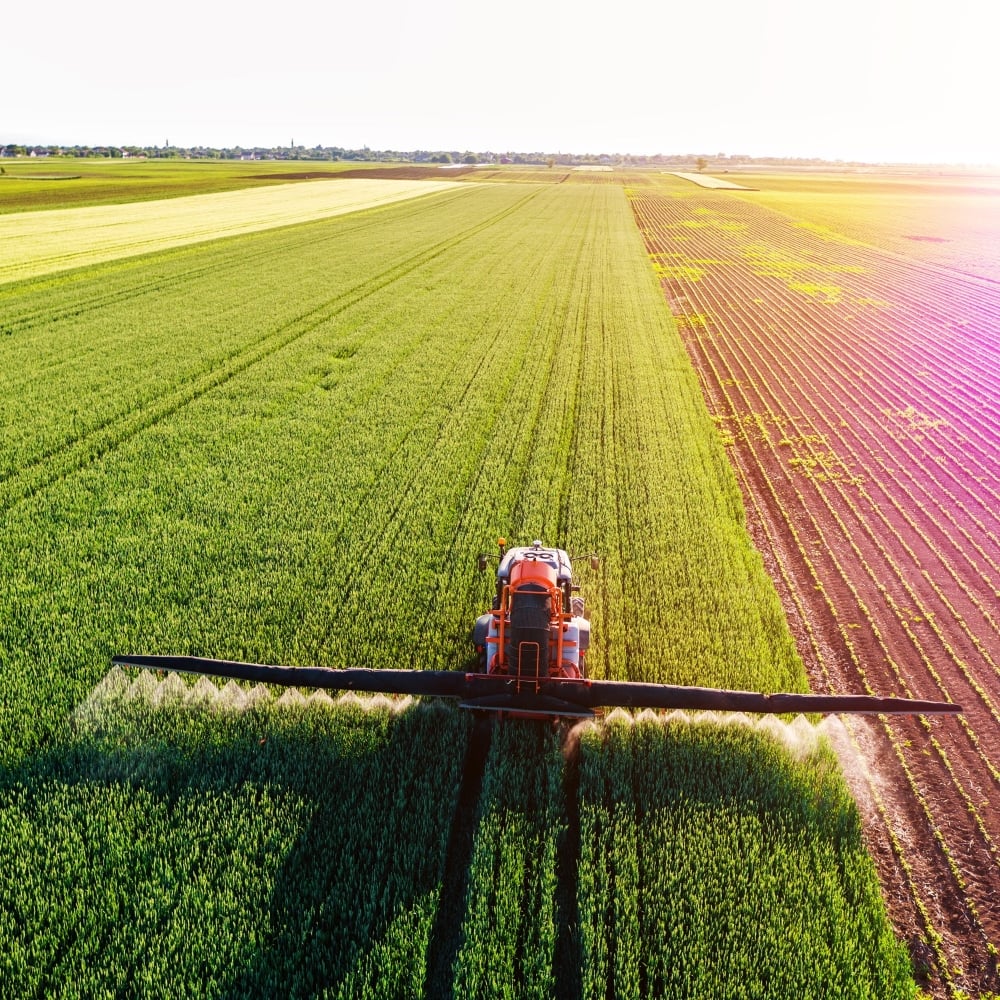1. Gas prices down but energy crisis far from over
Energy markets face a trilemma of competing issues – energy security, affordability and the required transition to clean energy. The war in Ukraine has been a key driver of current pressures and, while natural gas prices have fallen back in recent weeks, the energy crisis is far from over.
There is a high probability European gas prices will once again move above current levels and remain volatile. The European industry has cut its consumption of gas considerably, with widespread curtailments of capacity in energy- or gas-intensive sectors. If high and volatile prices persist, many of these curtailments will become permanent or the industry could relocate.
Energy security and high energy prices are high on the political agenda globally and, while both are conducive to greater investment in low-carbon options, short-term decarbonisation efforts have been hampered, as attention is diverted to more immediate concerns.
High energy prices in particular mean that low-carbon alternatives, such as renewable energy power generation or electric vehicles (EVs), are more economically viable. Our thinking on this, applying CRU’s proprietary Carbon Abatement Curve, is detailed here.
2. H2, green ammonia and CCS hype continues but realism is growing
DATA: CRU, Ammonia in the energy transition – grappling with the hope, hype and hysteria; Note: abatement curve based on 2030 investment costs, steady-state fossil energy prices and reported on a real 2022 basis
The excitement surrounding some low-carbon technologies will continue to grow. CRU’s project database on low emissions ammonia continues to grow and now accounts for 147 Mt of announced capacity globally. Over 10 Mt of this will reach a final investment decision in 2023/2024. In our view, many of these projects will fail to come to fruition.
Carbon capture and storage (CCS), green hydrogen, green ammonia and even renewable energy still require policy support in many instances because low-carbon technology options are frequently higher cost compared to traditional, fossil alternatives. This policy support will come in several forms:
- Carbon price: this raises the cost of fossil fuel-based technologies to render low-carbon options more cost competitive.
- Subsidy: lowers the cost of low-carbon technologies to render them cost competitive compared to fossil-based alternatives.
- Mandated targets: force change through government mandate and manage cost disadvantage through market protections.
CRU believes, despite the technological improvements seen and the falling costs, there is not yet a panacea to solve decarbonisation; and, while we expect the hype to continue in some quarters, there will also be more realism surrounding where and when to deploy available technologies. For example, the use of ammonia in power generation is highly wasteful given substantial energy losses through the value chain. Even the most expensive renewable power would be lower cost than using ammonia, green or otherwise, for power. Conversations surrounding green hydrogen costs falling to $0.5 /kg – an impossible target without significant subsidy – are becoming less frequent, demonstrating that realism is beginning to be injected into thinking.
3. Electric vehicles go mainstream
Global sales of full battery electric vehicles (BEV) and plug-in hybrid vehicles (PHEV) doubled in 2021 to represent over 8% of the auto market. 2022 saw even more rapid growth and another all-time high. BEVs and PHEVs accounted for nearly 14% of total light vehicle sales globally.
Even faced with a shrinking auto market, we saw strong EV sales across key markets. In China, growth will slow this year, with direct subsidies to EV buyers expiring at end-2022, although exemptions from the 5% purchase tax will remain for NEVs until year-end.
Despite this, we are confident BEV and PHEV sales are on course to hit 15 million units globally this year, accounting for 18% of light vehicle sales. Growth in market share has slowed slightly, but as more models are developed and launched, and as regulatory standards tighten, penetration rates will continue to increase.
4. Rising environmental protectionism?
The US Inflation Reduction Act and a focus on the security of energy as well as raw material supply in the USA has raised concerns globally and is expected to trigger the launch of more supply-side subsidies across key economies. This has caused the EU to look at its subsidy regime in far more detail. Separately, the EU is moving closer to the introduction of the Carbon Border Adjustment Mechanism (CBAM) that will levy carbon costs on imported goods such as aluminium and steel. While European policymakers state the aims of CBAM are to ‘level the playing field’ to minimise carbon leakage risks, major trading parties see it as protectionist and in breach of WTO rules.
As such, protectionism will be a common word in the vocabulary of 2023, not least in the context of environmental and industrial policy, and sustainability will take a greater role in defining trade relationships. ‘Climate clubs’ – however they become named – will be a defining aspect of trade policy in 2023.
At the G7 meeting in December 2022, the “Terms of Reference for a Climate Club” were set out. The G7 will be working with the OECD and the IEA to host an interim secretariat. Much of the initial scope will centre on the decarbonisation of hard-to-abate industrial sectors that are needed to support green growth and mitigation efforts. The club also wants to address green product standards and carbon leakage. Further sectors with substantial greenhouse gas mitigation potential can be included as agreed.
5. Greater focus on Scope 3 emissions
Scope 3 emissions – indirect emissions through the value chain – will come into sharper focus during 2023. This will be at the national level, through trade scrutiny and by setting tougher rules and regulations, including more prescriptive disclosure obligations and standards for the corporate sector.
Disclosure of Scope 3 emissions will be the first step in their reduction. In 2023, corporates will focus on supply chain partnerships and examine more how their products and services are used. There will also be increased focus on Scope 3 among financials. Portfolio managers in various jurisdictions, such as the EU, will need to gain more data on emissions due to tightening regulation. More are looking to the TCFD-aligned fund level reporting.
CRU has seen a huge increase in interest from consumers, producers and financials looking to get a complete value chain understanding of emissions. More companies are looking to map ‘cradle to gate’ emissions and make greener sourcing decisions to reduce their Scope 3 exposure.
6. More scrutiny of net-zero targets
The number of net-zero targets has proliferated over the last few years at both the corporate and country level. However, many lack rigour and milestones, with little reduction in emissions to date.
There will need to be a huge increase in private sector spending, vastly more policy support, further technological developments and considerably more progress in hard-to-abate sectors if many of these net-zero pledges are to become reality. Increasingly, net zero pledges will need to be compatible with science-based targets.
There will be greater global alignment and scrutiny of these commitments, in part due to initiatives such as the International Sustainability Standards Board (ISSB), Science Based Targets Initiative (SBTi) and the UN’s High-Level Expert Group. Many current targets lack accountability, consistency or a common baseline. The tightening climate disclosures, notably in North America, the EU and Asia, will likely facilitate this closer examination.
7. Increasing disclosure obligations
Disclosure obligations for corporations are growing globally. The most critical are the ‘big three’:
- The International Sustainability Standards Board (ISSB)
- The EU’s Corporate Sustainability Reporting Directive (“CSRD”), a law that requires eligible corporates to issue annual sustainability reports as well as Sustainability Reporting Standards (ESRS), and outlines how and what information and metrics companies need to report to European regulators to comply with the CSRD.
- The US Securities and Exchange Commission (SEC) proposed rules on the ‘Enhancement and Standardization of Climate-Related Disclosures for Investors’.
With a few notable exceptions, they all demand the disclosure of greenhouse gas emissions, the disclosure of double materiality (i.e., implications concerning financial value and wider impact on world) and that Task Force on Climate-Related Financial Disclosures (TCFD) recommendations are followed. They also embed a move towards reasonable assurance. Private businesses will also experience pressure from clients even though they are initially outside of the purview of these disclosure obligations.
The planned ‘big three’ disclosure frameworks have gaps in alignment but, as they approach implementation, will they further converge or separate? CRU believes there is a growing acceptance that alignment is needed and the beginnings of this trend have begun and will accelerate in 2023.
8. Sustainability credentials will dictate market access
This year will see a greater focus on supply chain monitoring and due diligence requirements for the commodity sector. The pressure here is going to increase and some companies will need to change practices to maintain access to markets. We think there will be growing importance of assurance schemes through commodity value chains. This will help consumers and producers navigate difficult arrangements and deals.
The EU has set mandatory due diligence rules, focusing on deforestation for all operators and traders who place, make available, or export many soft commodities to the EU market. The role of due diligence is going to increase as governments look to step up their efforts to protect nature and biodiversity. Watch also for the importance of water management rising up the agenda.
In the USA, solar energy equipment sourced from China is under considerably more scrutiny, with various acts looking to shape the solar supply chain. In December 2022, the European Parliament and member states reached provisional rules that cover the entire battery life cycle, from design to end-of-life, that apply to all types of batteries sold in the EU. From 2026, all EV and industrial batteries sold in the EU will require unique product identifiers. The German Supply Chain Act and the Swiss Articles 964a-964c CO, focused on transparency in non-financial matters, will also increase the scope of what many companies must evaluate.
9. Spending on resilience increasing but still far too low
While resilience was less central to COP27 than many expected, it is still set to grow in importance. The world needs to adapt in such a way that it is less vulnerable to extreme weather, which is increasing in magnitude and frequency, and chronic physical perils resulting from climate change.
The latest UNEP Adaptation Gap Report 2022, titled “Too Little, Too Slow – Climate adaptation failure puts world at risk”, states that between $160–340 bn/y is needed by 2030, and far more beyond. We are currently a long way from these levels.
A good example is in the wire and cable market. A growing number of extreme weather events, such as wildfires and winter storms, in recent years have highlighted the vulnerabilities in grid networks, resulting in loss of life, economic losses and property damage.
Undergrounding 5% of key distribution networks is shown to generate meaningful reduction in power outages. The need for greater resilience is changing investment levels, as well as product choice. In the USA, the 2021 Infrastructure Investment and Jobs Act has pledged $5 bn to preventing outages and enhancing grid resilience. In Germany, the Bundesrat recently approved the Grid Expansion Acceleration Act.
This is just one small example of what will be needed. Globally, there will need to be more flood defences, changes to agricultural practices and construction markets will be radically different. These and other changes will have profound impacts on both the demand and supply sides of all commodity markets.
10. Nature and biodiversity are rising up the agenda
The importance of nature and biodiversity is rising up the agenda for policy makers and is a growing area of risk for corporations globally.
For the first time, the COP27 cover decision mentioned food, rivers, nature-based solutions and tipping points. COP27 also saw the launch of the ENACT initiative – a coalition with a broad remit covering land, freshwater and marine ecosystems as well as the Forest and Climate Leaders’ Partnership. COP15, in Montreal during December 2022, reached a global agreement to protect 30% of the world’s lands, seas, coasts and inland waters by 2030.
Yet, compared to GHG emissions, natural habitats are extremely difficult to measure in a consistent, comparable way. The issues and impacts are highly location-specific and it is challenging to define a uniform baseline.
These issues need to be addressed to better coordinate action and improve funding for nature-based solutions. There is a growing recognition that natural preservation and regeneration have a significant role to play in mitigating and adapting to climate change. However, this potential has been untapped to date.
Guidelines for nature reporting from initiatives such as the Taskforce for Nature Related Financial Disclosures [TNFD] are growing and due diligence is becoming increasingly important. Adherence to the Global Nature-based Solutions (NbS) Standards will help to bring consistency to the way impact is measured, which is critical for unlocking funding.
At a broader level, there is a growing scrutiny of nature and biodiversity impacts. This will filter through to all commodity markets. It is a huge challenge to reduce commodity emissions to absolute zero and some producers may rely on nature-based solutions for offsetting residual carbon. However, there will be significantly more monitoring and scrutiny on voluntary offsets in the future.
All commodity markets will be shaped by sustainability
Increasingly, all commodity markets will be shaped by sustainability:
- Ever-expanding and complex policy and regulation will need to be understood and managed. Markets, policy, sustainability and the energy transition will become more interlinked and complex.
- The focus on measuring and implementing net zero targets, and the pace of decarbonisation will intensify.
- The development of green technologies, including renewable energy, electric vehicles, hydrogen and CCS is increasing but not yet at a pace to hit 1.5 °C targets.
- Increased funding, well-constructed policies and workable frameworks are needed for more rapid progress. However, much of the needed money and political will is yet to materialise.
To discuss any of the issues covered in this, or any of our previous Insights then please reach out to CRU Sustainability.




